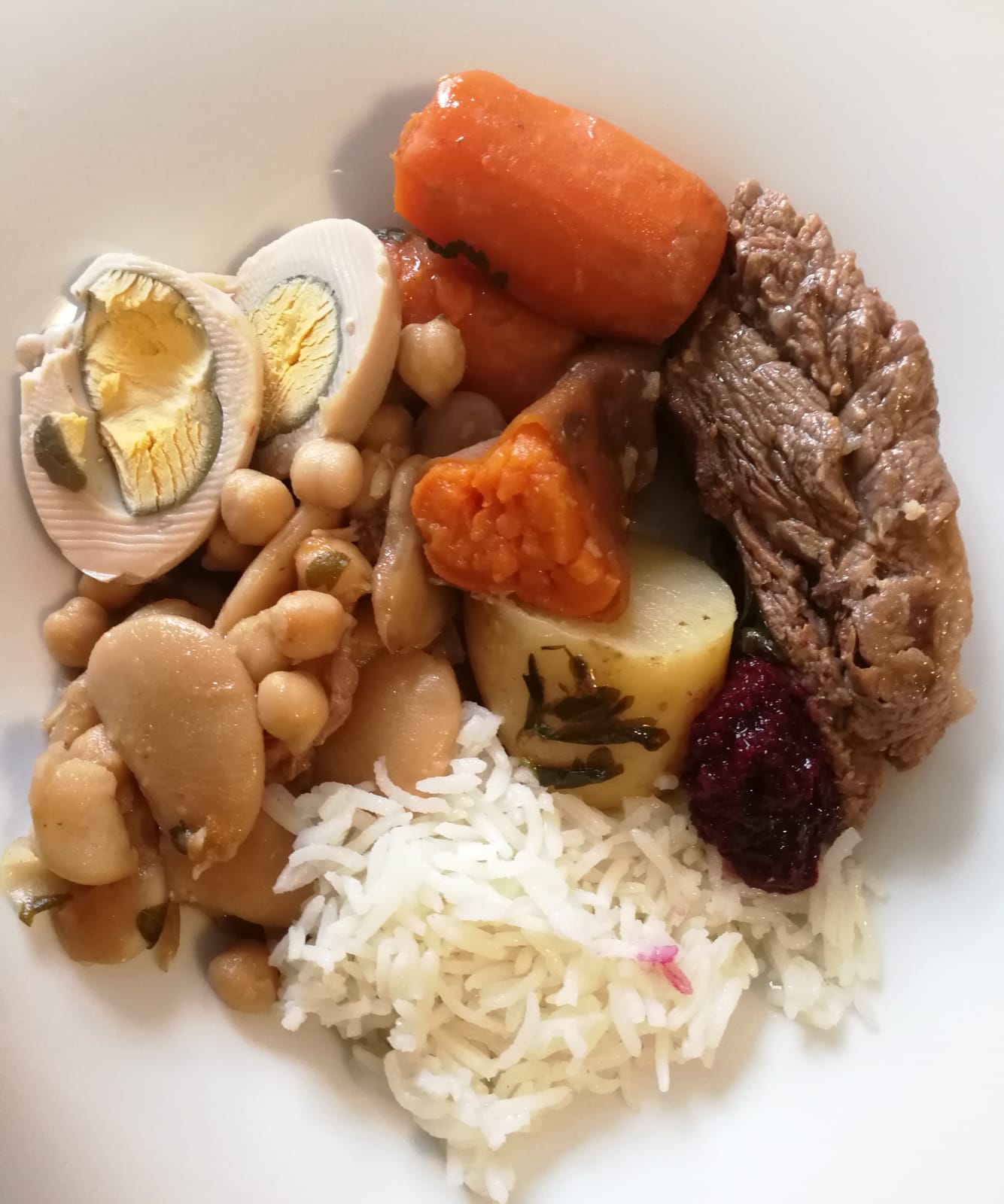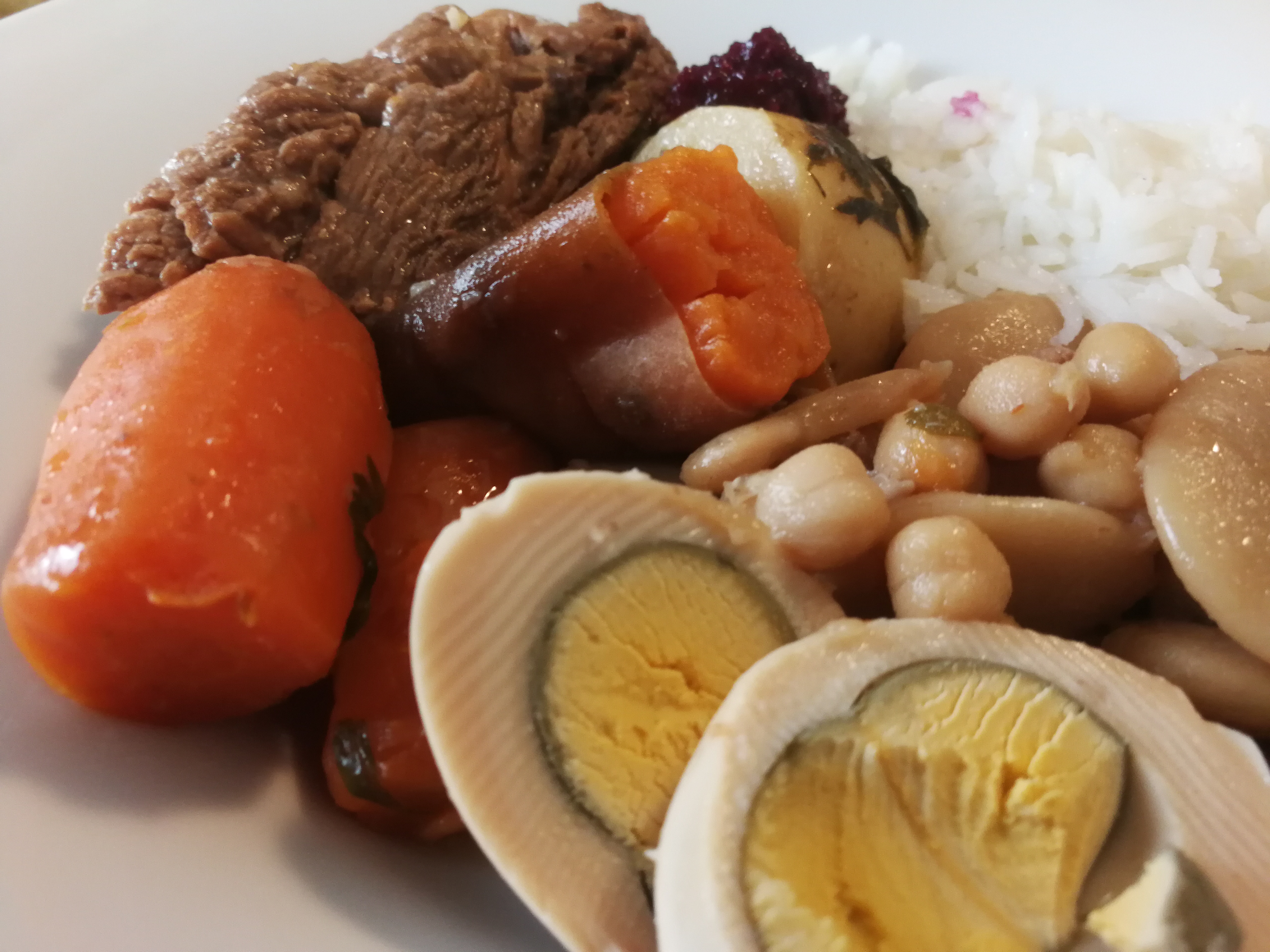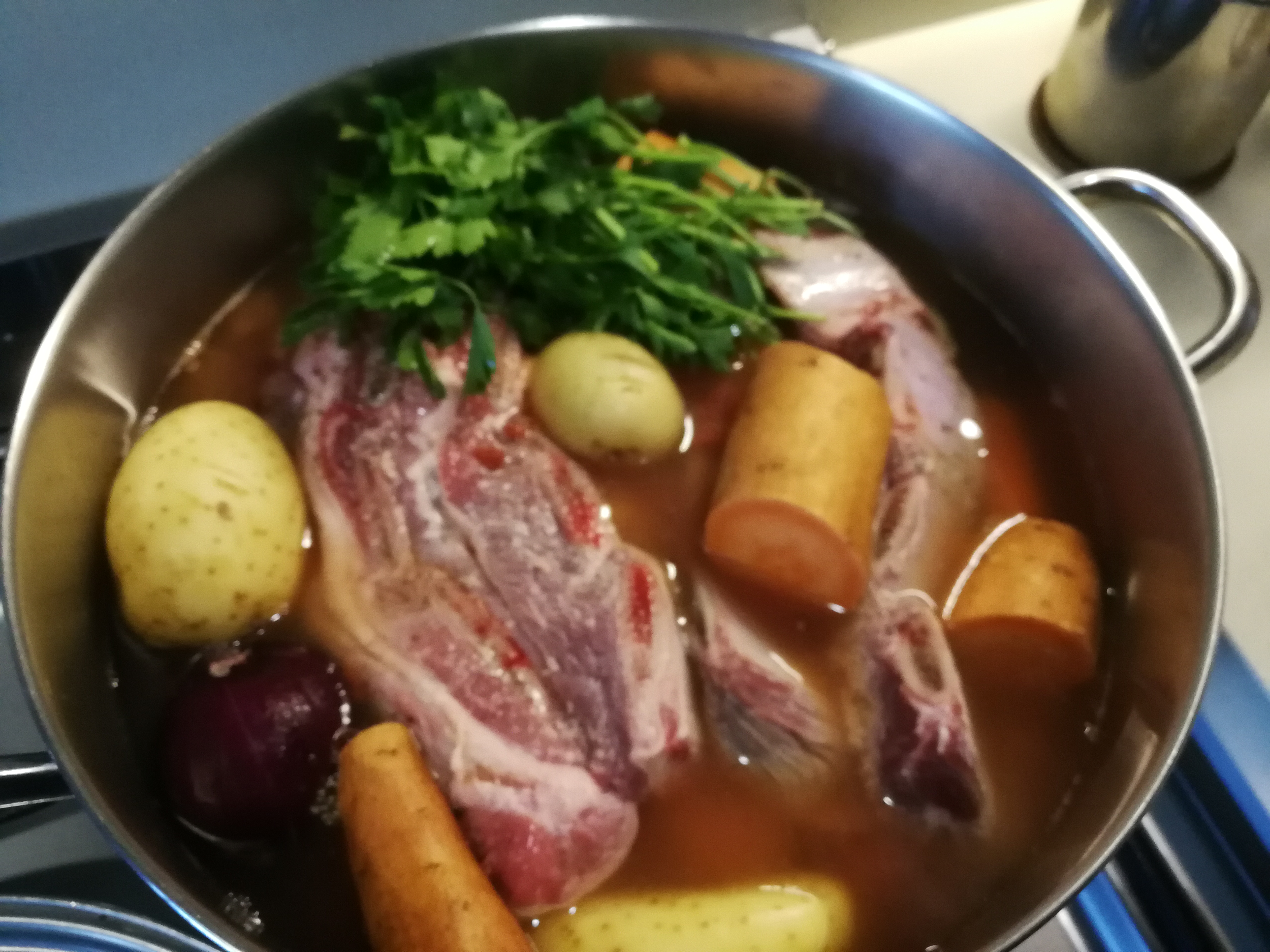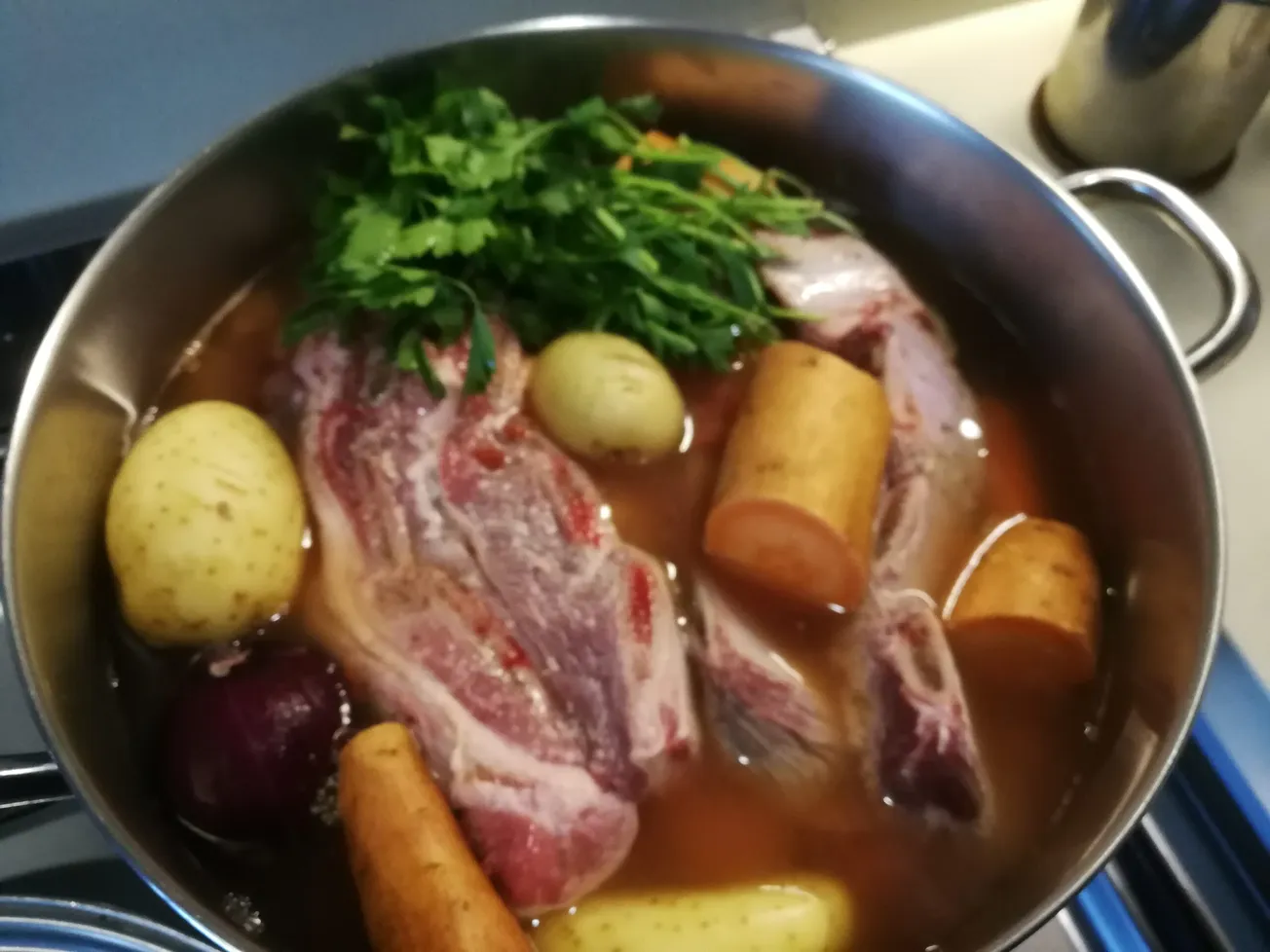Table of Contents
Hamin/Cholent is one of my favourite dishes for winter and as winter is kicking in down there it should be a good one for your cookbook. This dish is a really long cooking stew (12 plus hours) full of goodness, flavours and aromas, perfect any time of year but especially for a miserable, cold and wet weekend.
Hamin/Cholent is uniquely Jewish. It was originally created to allow religiously observant Jews to eat hot food on the Sabbath while abiding by prohibitive cooking restrictions that evolved to observe one of the Ten Commandments “Remember the Sabbath day, to keep it holy”. Basically, the dish is cooked at a high temperature in a tightly covered pot and is then moved to a warm place to continue cooking before the Sabbath begins on Friday evening where it continues cooking at a very low temperature in an oven or on a hotplate at around 100 C until it is served for Saturday lunch.
Hamin/Cholent is common to all Jewish communities from Morocco to India, from NZ to Norway. The only difference being the contents added to the hamin/cholent pot. Different communities make use of common traditional ingredients that are local to them and seasoning that is unique to their regions.
The name of this dish while different from place to place carries the same general meaning. Hamin is hot in Hebrew, cholent which is the name used in Northern and Eastern Europe is said to have come from old French “to warm”. The North African Jews called it S’hina and the Iranian Jews called it Oshi; both mean hot or warm in Arabic and Persian respectively.
It is simple to put together and the great thing is that it cooks itself. You can prepare the day before and forget about it. It goes well with tehina and chazeret (fresh grated horseradish and beetroot), and one good pot can satisfy a very happy and content gathering.
Hamin/Cholent does, however, come with a warning. If you prepare it with beans and chickpeas be prepared for a touch of embarrassing and inconvenient flatulence. Then again if everyone is doing it it doesn’t seem to matter that much.
For the non observant Jew, plain white rice is a great accompaniment to hamin/cholent and takes less than 20 minutes to prepare. My recipe for basmati white rice can be found in my column for the Greek dish moussaka .
To view my other recipes as well click on my name at the end of this column.



Stew Cholent Hamin. photo credit : The BFD
Hamin/Cholent (Makes a Family Sized Pot)
Ingredients:
- Stewing beef or assado with bones x 1 kg
- Large dried white beans x 1 kg
- Dried chickpeas x 500 gram
- Potato x 4
- Carrot x 4
- Large onion x 1
- Whole head of garlic x 1
- Parsley root or washed bunch of parsley x 1
- Hard boiled eggs x 1 per person
- Tomato paste x 100 gram packet
- Salt & pepper to taste
Method:
- Soak the chickpeas and white beans separately for approximately 8 hours before adding them to the pot.
- Take a large pot that has a lid. First, sear the meat in the pot until browned on all sides, and set aside on a plate.
- Boil the eggs for at least 8 minutes, then remove and set aside.
- Peel carrots and parsley root, peel onion and scrub potatoes well. Wash the head of garlic, keeping it whole.
In the bottom of the pot place the chickpeas and white beans separately, then place the seared meat. After this, place potato, garlic, onion, carrot and parsley root or a bunch of parsley neatly around the meat.
Boil enough water to cover the ingredients in the pot. Add to the boiling water the tomato paste, 2 teaspoons of salt and a teaspoon of coarsely ground pepper. Pour liquid over the contents in the pot, ensuring everything is covered.
Cook for half an hour on medium heat while removing the froth that accumulates with a spoon. Remove from the stove and add the hard-boiled eggs. Place baking paper over the contents, seal with aluminium foil then place the lid tightly onto the pot.
Place in the oven preheated to 180 Celsius for an hour and a half, reduce the heat to 100 Celsius and cook overnight for at least 12 hours. It can stay in the oven at 100 C for 15-16 hours. Remove from oven, remove the eggs and peel, then distribute the bounty evenly amongst the punters’ plates.
AMAZING (English), Ya Allah (Arabic), Madheem (Hebrew) everyone should exclaim.
Next week is one of my daughter’s birthday. As a real treat for her I will make mille feuille with patissiere cream, otherwise known as Napoleon cake up here or vanilla slice down there.
Until then…
If you enjoyed this recipe why not share it with your friends via social media or e-mail? If you want a copy of your own select the print option at the top of the page.









